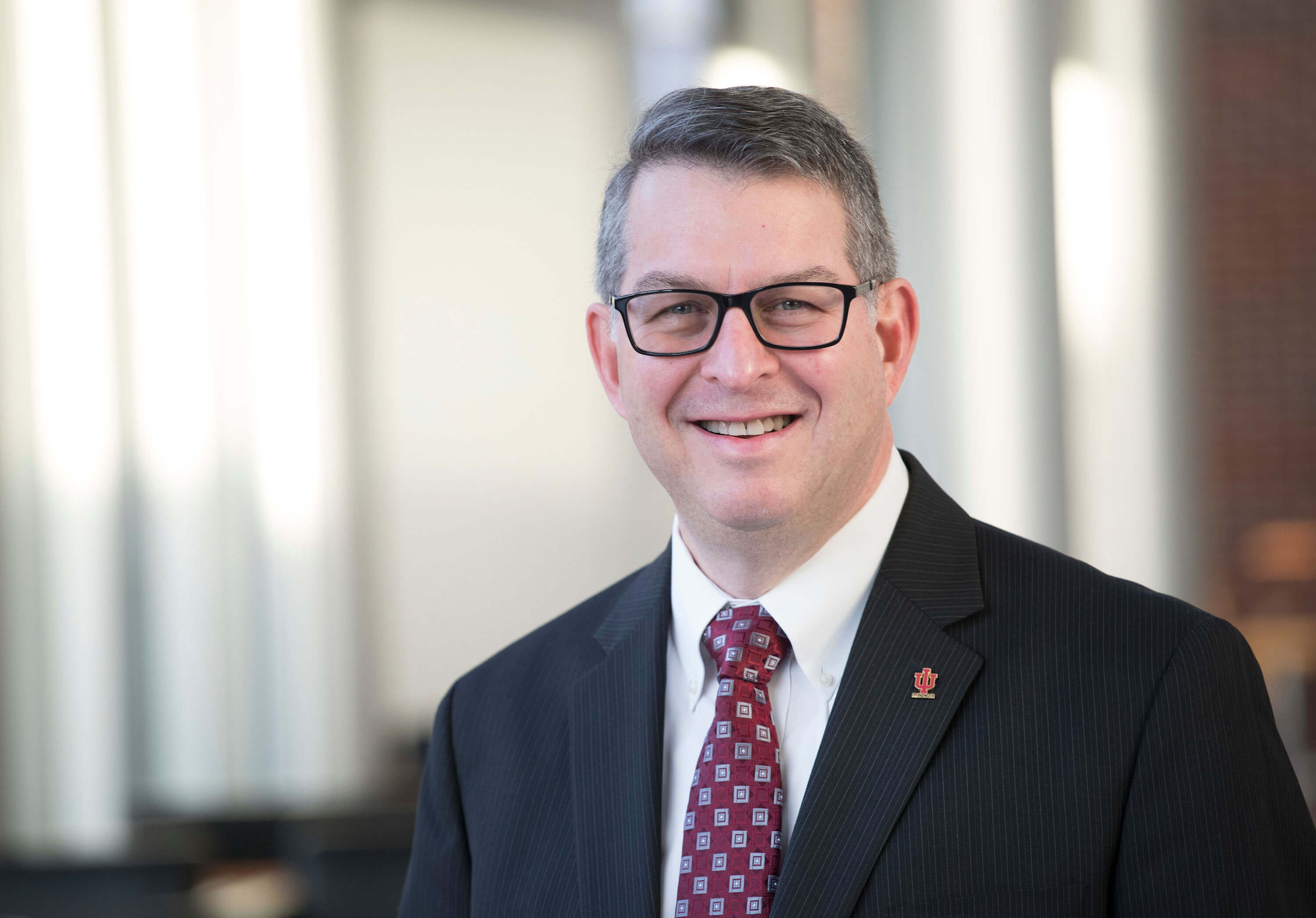Tweaks Keep the Pipeline Open

Paul Wallach, MD
Bobby King Nov 11, 2020
THE DELIVERY OF medical education in the age of COVID-19 continues at IU School of Medicine, even as a pandemic that arrived at the end of one academic year has lingered in the early months of another.
When it comes to courses once built around lectures and small groups, those have gone almost exclusively virtual—lessons delivered via Zoom. In anatomy lab, where students normally gather around a dissection table in groups of six, students will not only wear masks but work only in pairs—a nod to social distancing.
Where face-to-face interaction is a necessity, such as with practicing the components of a physical exam or the use of point-of-care ultrasound, lessons will be done with use of surgical masks or rescheduled for the spring. By then, the thinking goes, there will hopefully be less disease in the community and possibly a vaccine.
“It’s not business as usual, it’s business as modified,” said Paul Wallach, MD, the executive associate dean for educational affairs and institutional improvement.
Back in March, when it became clear the pandemic had established a beachhead in the United States and was primed to explode, IU School of Medicine took some drastic steps.
With personal protective equipment becoming scarce in hospitals and clinics, students were pulled from clinical settings to extend the supply for frontline health workers. In-person lectures moved online. The students themselves helped create a new course—Fundamentals of COVID-19—which provided a real-time lesson in evolving science, uncertainty in medicine, and how to evaluate the quality of sometimes conflicting information.
The pivot was sudden but successful. Students who have taken the standardized exams that are given annually have performed well, said Bradley Allen, MD, PhD, the school’s senior associate dean for medical student education. “They have been very flexible and resilient,” Allen said.
By late June, as the PPE supply caught up with demand, students were able to return to clinical settings and plans for the new academic year were laid out. Such nimbleness, during a situation unseen at the school in a century, reflects a fundamental reality of medical education in Indiana: In a state where physicians are already in short supply—and at a time when health care providers have perhaps never been more in demand—there simply is no alternative to producing new doctors. “We recognize that there’s a workforce pipeline issue as it relates to medicine, so we want to do our part to make sure we are graduating qualified, well trained doctors,” Wallach said. “And we understand that interrupting that pipeline would have serious implications for our patients and communities.”
With a full complement of 365 first-year students, the IU School of Medicine pipeline is flowing freely.
Bobby King
Bobby King is the director of development and alumni communications in the Office of Gift Development. Before joining the IU School of Medicine in 2018, Bobby was a reporter with The Indianapolis Star. Before that he was a reporter for newspapers in Kentucky, South Carolina and Florida.